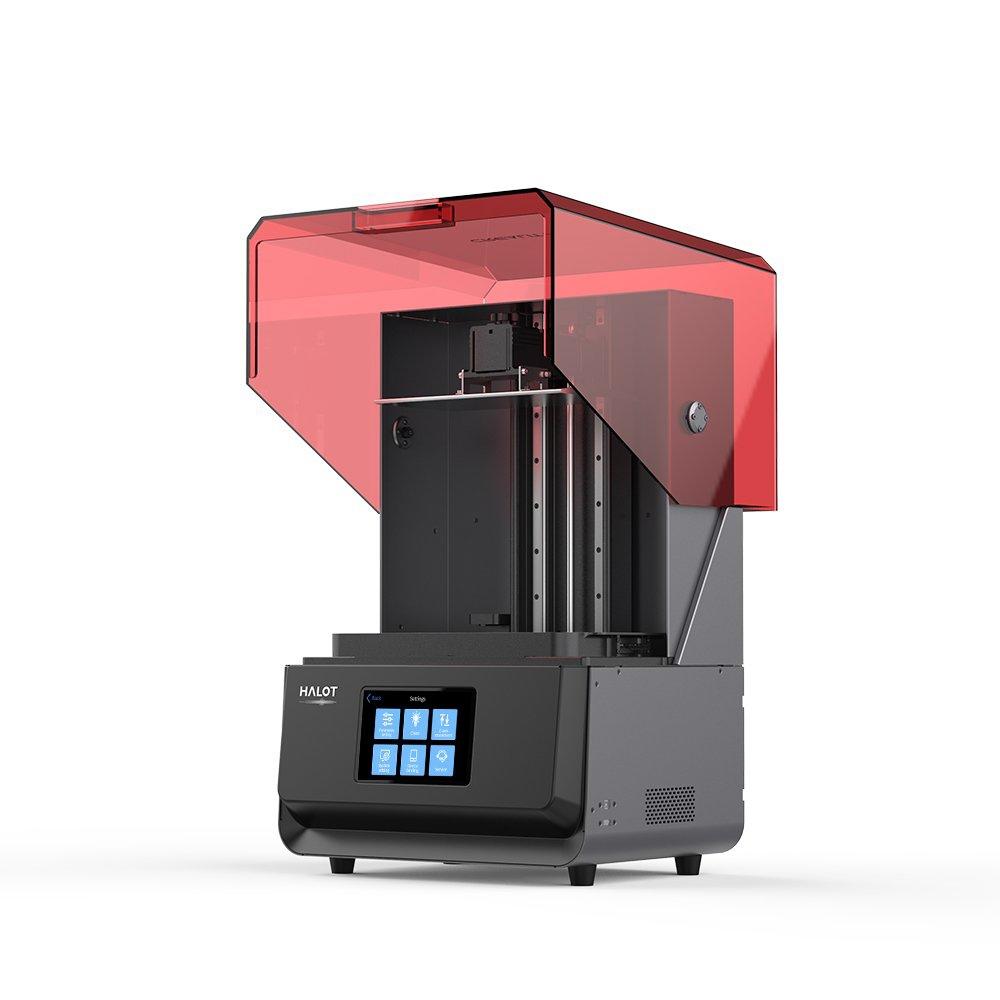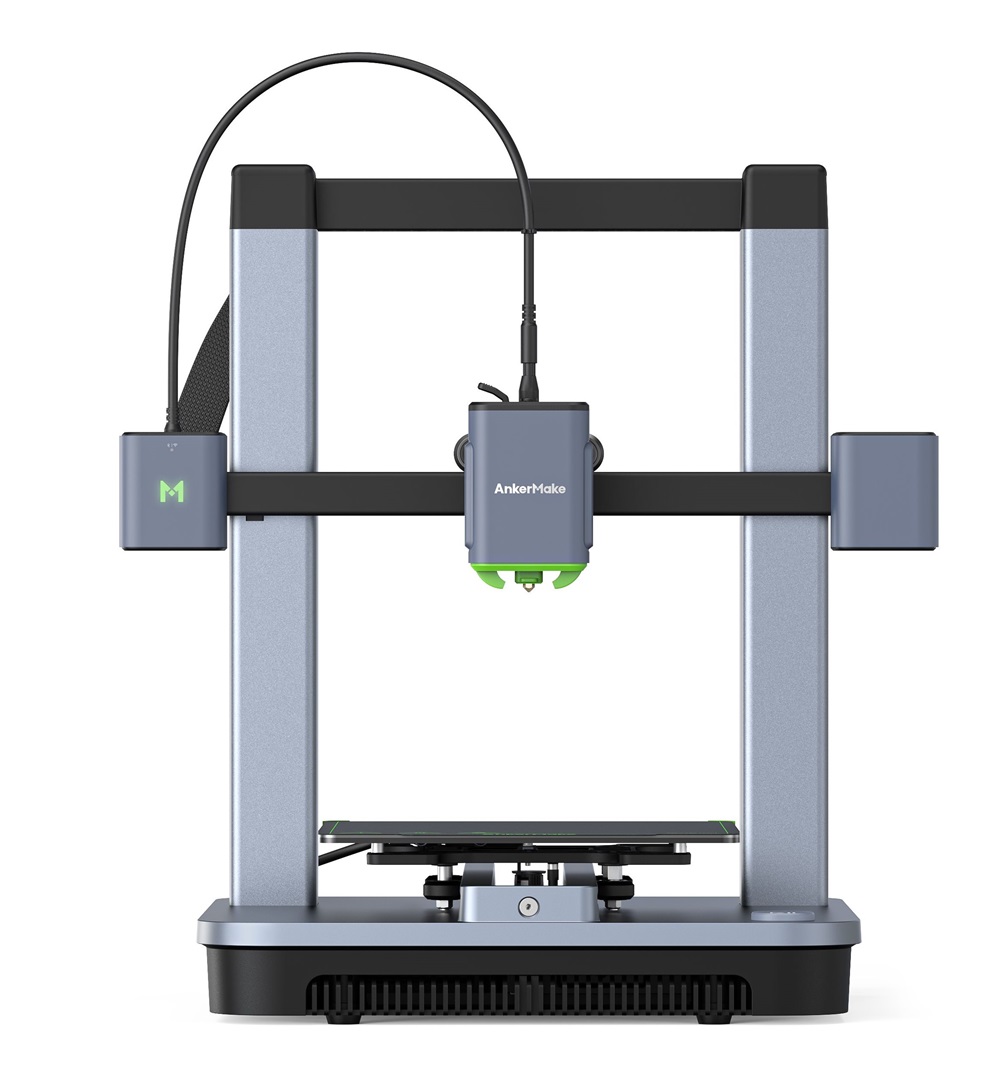Compare Halot Max vs M5C
Comparison between the best 3D printers
Choose the best 3D printer at the best price. The cheapest 3D printers are here.
Buy a 3D printer here with 3D Fila.
 |
 |
|
| Model | Halot Max[BUY Halot Max] |
M5C[BUY M5C] |
| Printing Material | Resin | Filament |
| Buy Resin for Creality 3D Halot Max | Buy Filament forAnkerMake M5C | |
| Estimated price | $3000,00 | $399,00 |
| Manufacturer | Creality 3D | AnkerMake |
| Release Year | 2021 | 2023 |
| Print Volume [mm] | 293x165x300 | 220x220x250 |
| Printer Size [mm] | 480x387x770 | 466x374x480 |
| Weight [kg] | 32,5 | 9,6 |
| Power Loss Recovery | NO | YES |
| Maximum Resolution [mm] | 0,03 | 0,1 |
| Processor | ||
| Display | Display touchscreen 5'' | |
| Power Supply | 350 W | |
| Connectivity | SD / USB / Wi-Fi | Wi-Fi, USB-C, Bluetooth |
| Operating systems | Windows, Mac, Linux | Windows, Linux e Macbook |
| Date of registration in the system | 2022-11-04 | 2024-09-11 |
| Release date | 2021 | 2023 |
| Extra features | The Halot Max printer stands out for its large print size (293 x 165 x 300 mm) and uses SLA technology. It has an integral light source for improved accuracy and a strong core with an advanced operating system. Its Z-axis module ensures high precision, supported by efficient slicing software. The machine offers online OTA updates and boasts an adjustable layer thickness between 10 and 200 microns. Its XY-axis resolution is 3840*2160, with 0.05 mm accuracy, and an integral 405nm light source. The printer includes a 5" touchscreen and multiple connectivity options, such as USB, Creality Cloud, and HALOT BOX WiFi. With cutting-edge technology, the Halot Max is ideal for printing small models with uniform precision, thanks to its self-developed lighting system and stable printing mechanism, which includes dual linear guides, ball screws, and an intelligent brake system. | The AnkerMake M5 printer stands out for its impressive print speed, reaching up to 500mm/s. It features AI print monitoring, an integrated camera for creating timelapses, auto-leveling bed with pressure sensor, direct extruder, flexible PEI-coated build plate, and Wi-Fi and USB-C connectivity. Assembly is quick and easy, and the printer is designed to deliver high print quality and ease of use. |
| Support for multiple colors and materials (AMS and CFS) | NO | NO |
Notes * |
||
| Cost-benefit | 5 / 10 | 7 / 10 |
| Hardware | 1 / 10 | 2.8 / 10 |
| Tela | . | . |
| Print volume | 3 / 10 | 3 / 10 |
| Performance | 9 / 10 | 4 / 10 |
| [BUY Halot Max] | [BUY M5C] |
Conclusion |
| In comparing the Halot Max and the AnkerMake M5C 3D printers, it is evident that both models cater to different user needs and preferences, leading to distinct advantages and drawbacks. The Halot Max, while significantly higher in price, offers a larger print volume and a superior resolution, making it ideal for users who require high precision and detail in their prints, such as for prototyping or detailed models. Its robust build and advanced features, including an integral light source and efficient slicing software, provide a professional-grade experience, although it lacks power loss recovery, which could be a drawback in case of interruptions during printing. On the other hand, the AnkerMake M5C, being more affordable and released more recently, is designed for efficiency and ease of use, emphasizing speed with its remarkable print speed of up to 500 mm/s. It features user-friendly elements such as AI print monitoring and auto-leveling, which can significantly streamline the printing process for beginners or casual users. In terms of connectivity, the M5C excels with multiple options, allowing for greater versatility and convenience. Additionally, its lower weight makes it more suitable for those who require portability or have limited space. Ultimately, the choice between these two printers largely depends on the user's specific needs. For those prioritizing high precision and larger print capabilities, the Halot Max warrants consideration despite its higher price tag. Conversely, the AnkerMake M5C offers a compelling blend of speed, functionality, and cost-effectiveness, making it an excellent choice for users looking for a reliable and user-friendly 3D printing solution. The cost versus performance evaluation, along with feature comparison, suggests that the M5C holds a stronger overall cost-benefit ratio for most casual users. |

